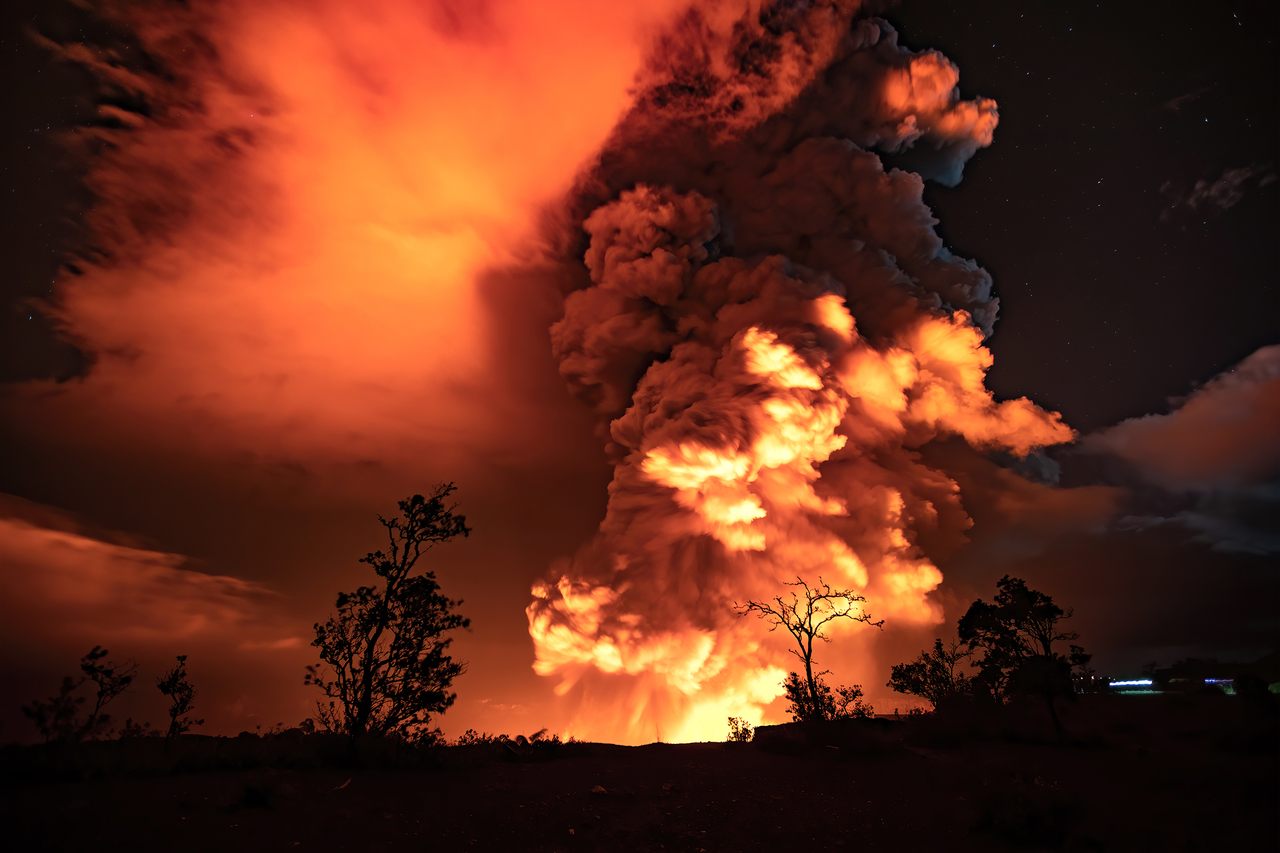How Indonesia’s Toba Volcano Changed Human Evolution
The massive supervolcano eruption 74,000 years ago has been blamed for nearly killing off our species. The emerging truth is much more interesting.

They never saw it coming. For the small bands of hunter-gatherers across Africa and Eurasia, the day was like any other. Some tracked great herds of migrating animals across expansive grasslands; others moved through dense rainforests, or along the banks of turgid rivers and ephemeral streambeds. Survival—finding food and water, avoiding predators, strengthening the small group’s social bonds—was the order of the day.
Thousands of miles away, an extraordinary event was about to take place: a cataclysm that would make the entire planet shudder. It would also change the story of our species. The question is, how?
About 74,000 years ago on Sumatra, the Toba supervolcano erupted on a scale that is difficult to comprehend. It was the most powerful eruption of the last 2.5 million years; by volume, it was more than 215 times larger than the 20th century’s biggest boom, the Novarupta event in Alaska, and more than 11,000 times the size of the 1980 Mount St. Helens eruption. It dwarfed even the three largest known eruptions of the Yellowstone supervolcano.
In the late 20th century, researchers began trying to reconstruct what happened after Toba blew. According to those early models, inches-thick blankets of ash smothered much of the Indian subcontinent and choked the seas from the Arabian to Chinese coasts. Global air currents swept a haze of sulfur and ash particles across oceans and continents, wreaking climate havoc. Many regions became arid. Average temperatures tumbled in several areas; the chill may have lingered for a millennium. Entire ecosystems vanished. Billions of plants and animals perished, including an unknown number of humans.

As a result of the earlier research, the Indonesian supervolcano has long played the role of villain in the human story. For much of the past 30 years, the so-called Toba catastrophe theory held that our species was nearly wiped out in the eruption and the climate chaos that followed.
For several years, the catastrophe theory seemed plausible. Anatomically modern humans evolved more than 200,000 years ago in Africa, and since then small waves of our ancestors have dispersed from the continent multiple times. But there was a genetic bottleneck in our ancestral past, a time when apparently all human populations outside Africa were decimated, and only a few thousand humans in Africa survived. Because the hidden history encoded in our DNA pointed to the near-extinction event for Homo sapiens occurring 50,000–100,000 years ago, Toba was the most obvious suspect.
A growing body of research tells a different story: While the effects of the Toba supervolcano eruption were felt globally, they were not experienced evenly. In a 2021 study in PNAS, new and refined climate models suggested that, while average temperatures in large parts of the Northern Hemisphere may have cooled 4 degrees Celsius (7.2 degrees Fahrenheit), most of the Southern Hemisphere experienced little to no cooling. The same models suggest that increased aridity varied widely as well. Some areas, particularly in northeast Asia and also the Himalayas, likely saw a 40 percent drop in precipitation, but rainfall was unchanged elsewhere. Multiple other climate models published in the last half-decade also found region-specific effects, and sometimes none at all.
Even a Toba-induced genetic bottleneck now seems unlikely. Despite exponential advances in genomics, scientists have found no evidence that a massive dip in our numbers occurred during or shortly after the eruption. Instead, archaeological and paleoanthropological evidence increasingly suggests that, for our species, the Indonesian volcano was not a harbinger of doom. It was a catalyst for innovation.
Stone tools have been found both above and below layers of Toba ash deposited in northern India, the Arabian Peninsula, and elsewhere, showing that humans were present in those areas before and after the catastrophic eruption. They found ways to weather the actual event and any changes in climate that followed. And in March, after decades of research in a remote corner of Ethiopia, a multidisciplinary team determined that humans there survived shifts in climate likely caused by the distant eruption by changing their diet and, quite possibly, innovating a new hunting technique: archery.
Excavations began more than 20 years ago at Shinfa-Metema 1 in Ethiopia’s northwestern lowlands, along the Shinfa River, a tributary of the Blue Nile. Teams working there have unearthed a compelling snapshot of life before and after the Toba eruption. While the work has been underway for decades, an exciting aspect of the researchers’ recent paper in Nature is the more specific dating, thanks to microscopic debris from the Indonesian eruption that landed at the Ethiopian site.

Among the site’s most tantalizing finds: pointed tips shaped from local stone about the same time as the Toba eruption, 74,000 years ago, which appear to be the oldest arrowheads ever found, beating out similar stone tips from Southern Africa by a few thousand years. While speculative, it’s possible that humans at Shinfa-Metema 1 invented new ways of hunting in response to an environment reshaped by the distant eruption.
It’s clear that their diet changed. Geological evidence preserved at the site shows that it became increasingly arid. In addition to wildebeest-like animals, monkeys, and ostriches on the menu, people there began eating larger quantities of fish, likely because, as seasonal waterways dried up, fish trapped in shallow pools offered a ready source of food.
The people at Shinfa-Metema 1 and in other parts of the world survived in the wake of the supervolcano eruption by being flexible in their behavior, and innovating new ways of finding food. The world changed when Toba blew its top, but humans did what humans do best: We adapted.





















Follow us on Twitter to get the latest on the world's hidden wonders.
Like us on Facebook to get the latest on the world's hidden wonders.
Follow us on Twitter Like us on Facebook